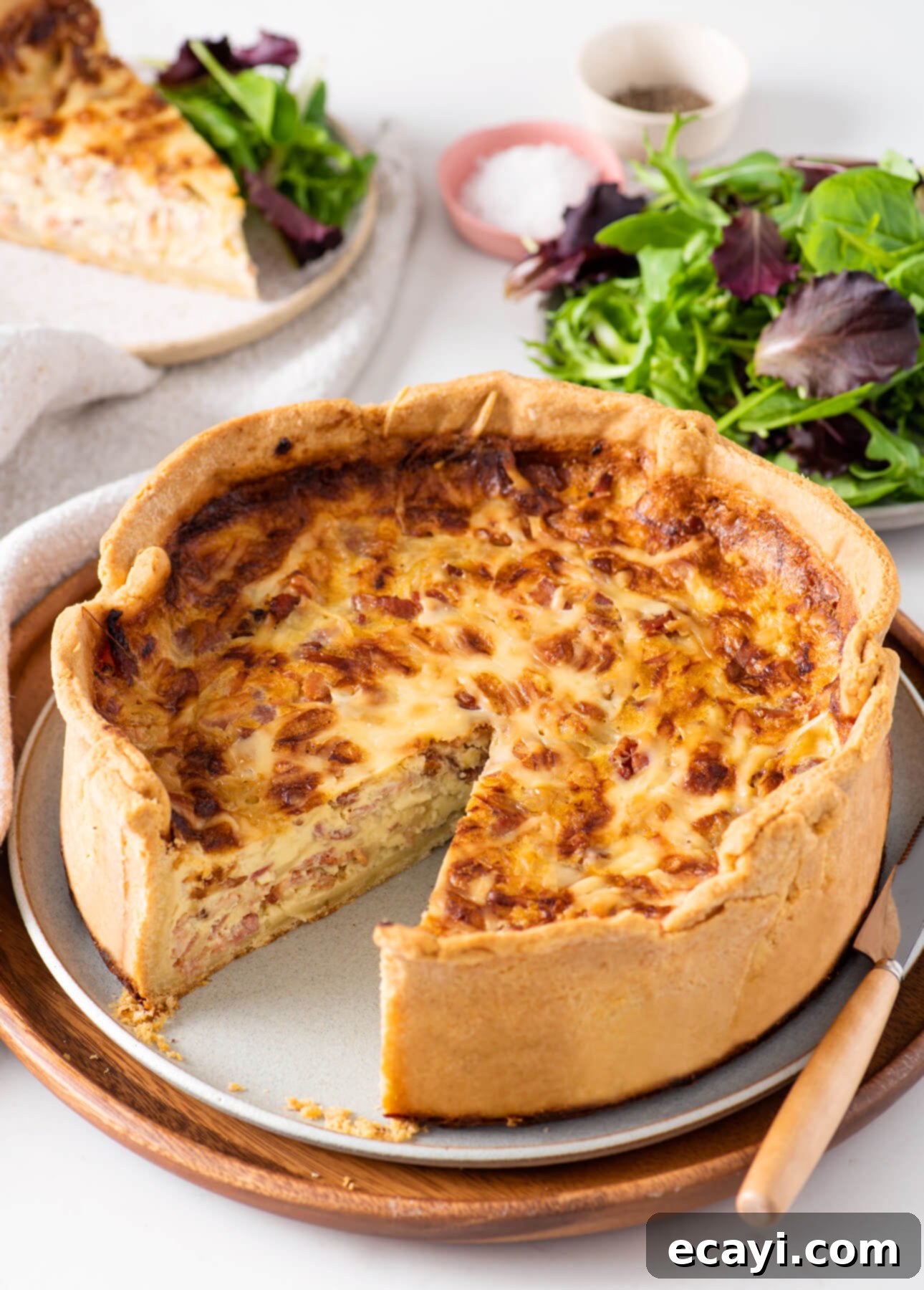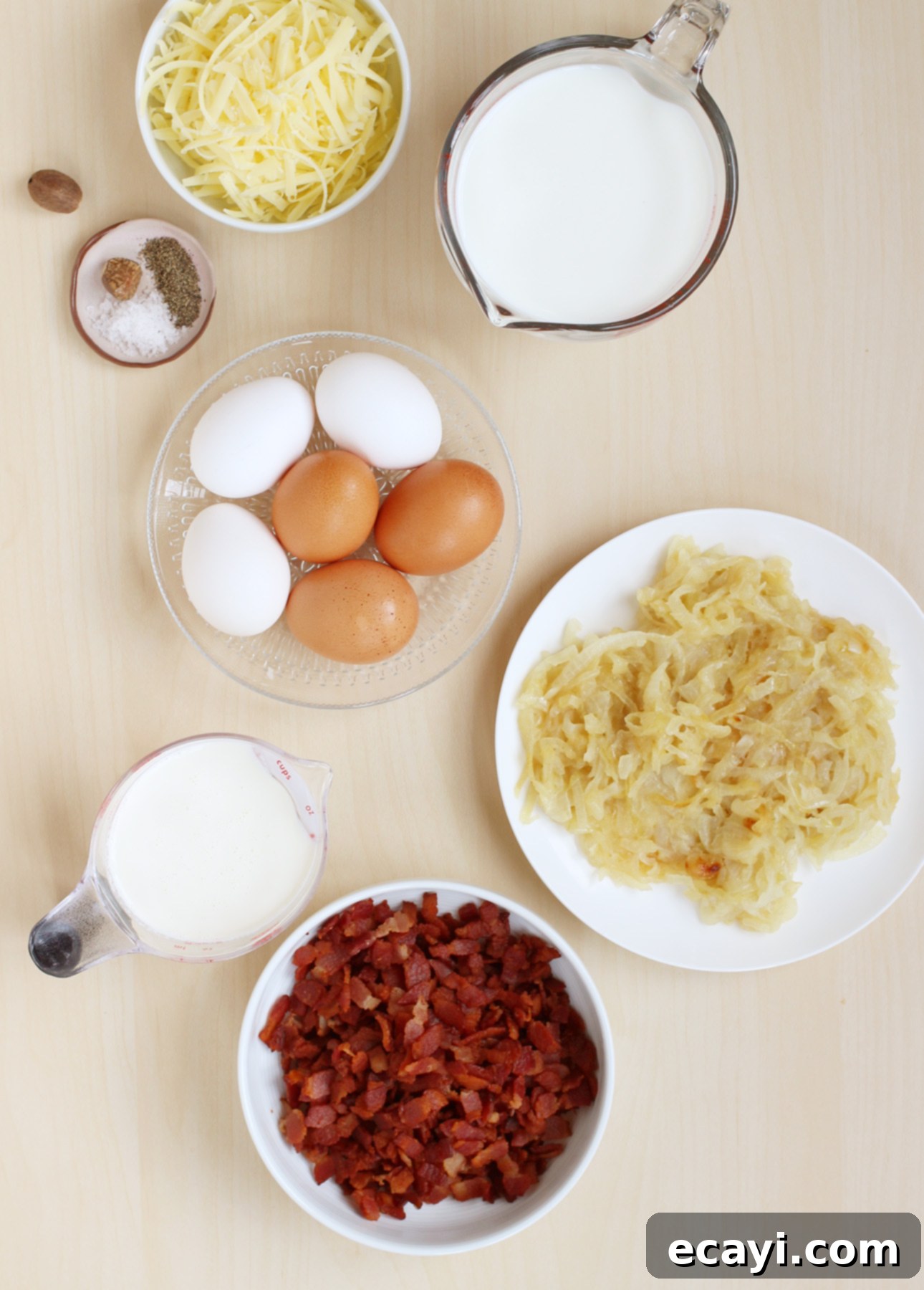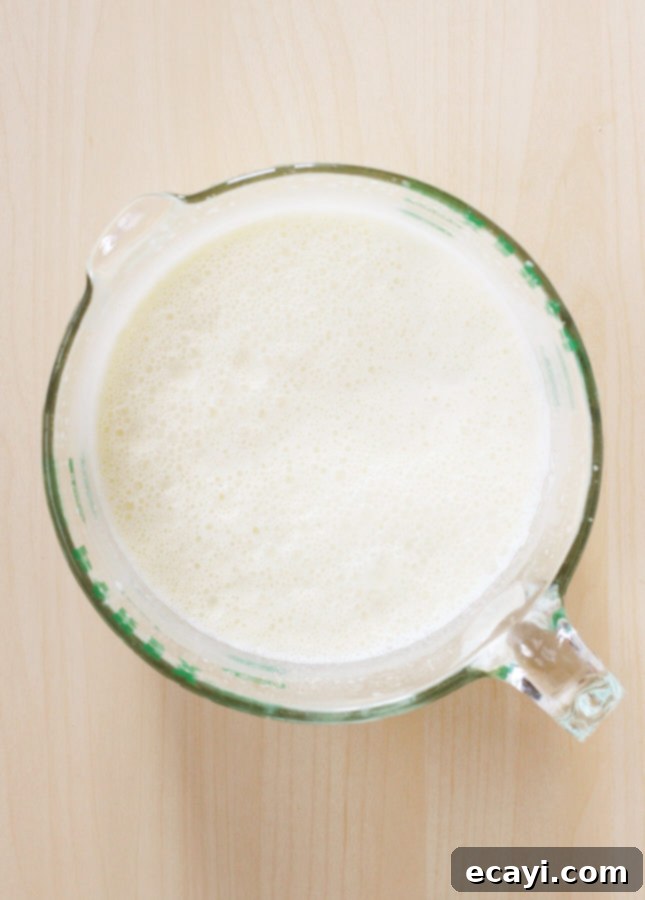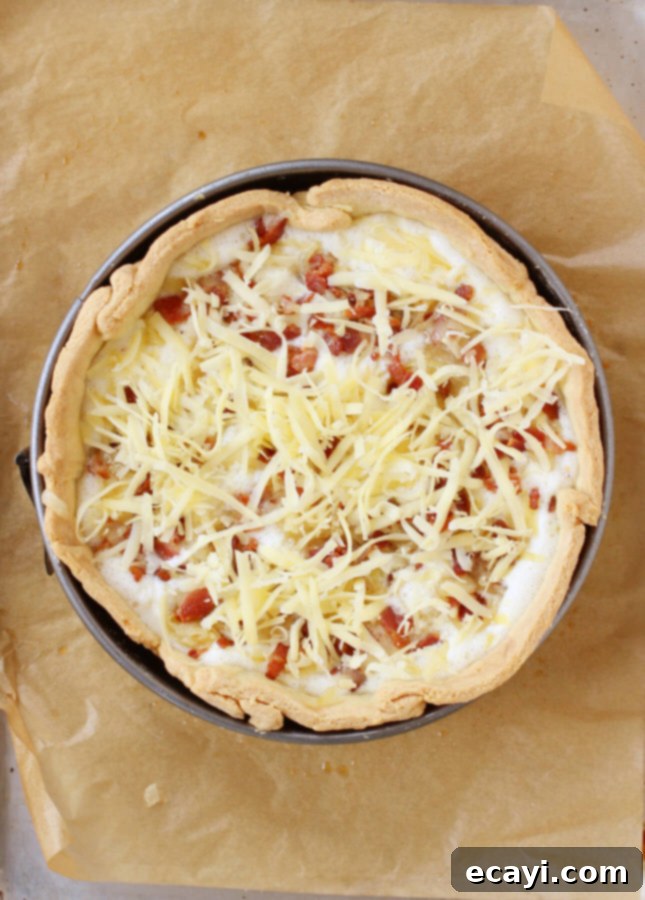Authentic Classic Quiche Lorraine: Your Guide to a Flaky, Custardy French Masterpiece
No other savory pie is quite as elegant and deeply satisfying as a classic Quiche Lorraine. Journey to the heart of French culinary tradition right in your own kitchen with this step-by-step guide to creating a rich, custardy, and truly authentic French quiche.
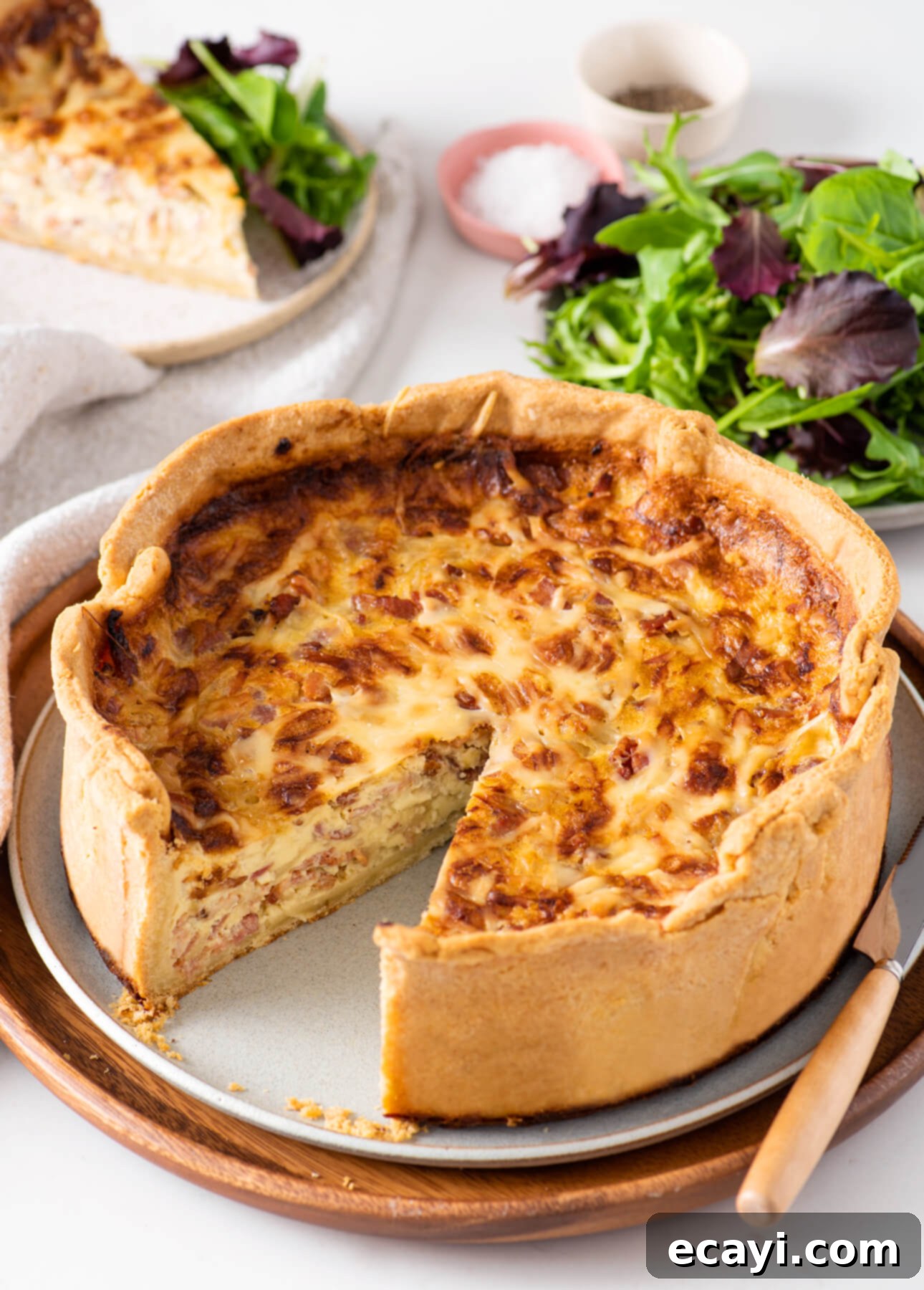
This post contains affiliate links. Full disclosure is at the bottom of the article.
For many home cooks, the idea of creating a perfect shortcrust pastry from scratch can feel like a daunting task. For years, I, too, found myself hesitant, even intimidated, by the prospect. Despite reading countless tips from seasoned bakers who stressed the importance of a reliable pie pastry recipe and how quickly one could master it with practice, a truly flaky, golden, and consistently perfect homemade crust always seemed just out of reach. Each attempt felt like a battle, often ending in frustration.
The repeated failures eventually led me to rely on store-bought crusts. During my time in Paris, I discovered the “Marie” brand, an excellent pre-rolled, all-butter pastry that fit perfectly into my fluted tart pans. It became my secret weapon for whipping up delightful sweet and savory tarts and pies in a flash, allowing me to enjoy homemade flavors without the pastry struggle.
However, upon returning home, I couldn’t find a comparable high-quality, all-butter, ready-made shortcrust pastry. This scarcity meant a hiatus from my beloved pie-making adventures. After a couple of years devoid of homemade quiches, tarts, and pies, I reached a turning point. If I had successfully mastered intricate desserts like macarons and éclairs, surely I could conquer the seemingly simpler challenge of pie dough. It was time to tackle it once and for all.
I dove back into my culinary reference books, leveraging years of recipe development and testing experience. I meticulously took notes, refined techniques, and tweaked ingredients until I had a method that was not only consistent but truly foolproof. The result? A shortcrust pastry recipe that comes together in mere seconds, never fails, and delivers a perfect crust every single time.
Mastering this foolproof shortcrust pastry transformed my home baking. It unlocked a world of possibilities, allowing me to resume making a wide array of pies and savory tarts, from a luscious Lattice-Top Blueberry Pie to the star of this article: Quiche Lorraine.
If you’ve ever found yourself battling with homemade pie crust, I wholeheartedly encourage you to try my foolproof shortcrust pastry recipe. The magic happens in seconds, right in your food processor! This method is a game-changer, guaranteeing consistent, delicious results and making pie-making an enjoyable experience, not a dreaded chore.
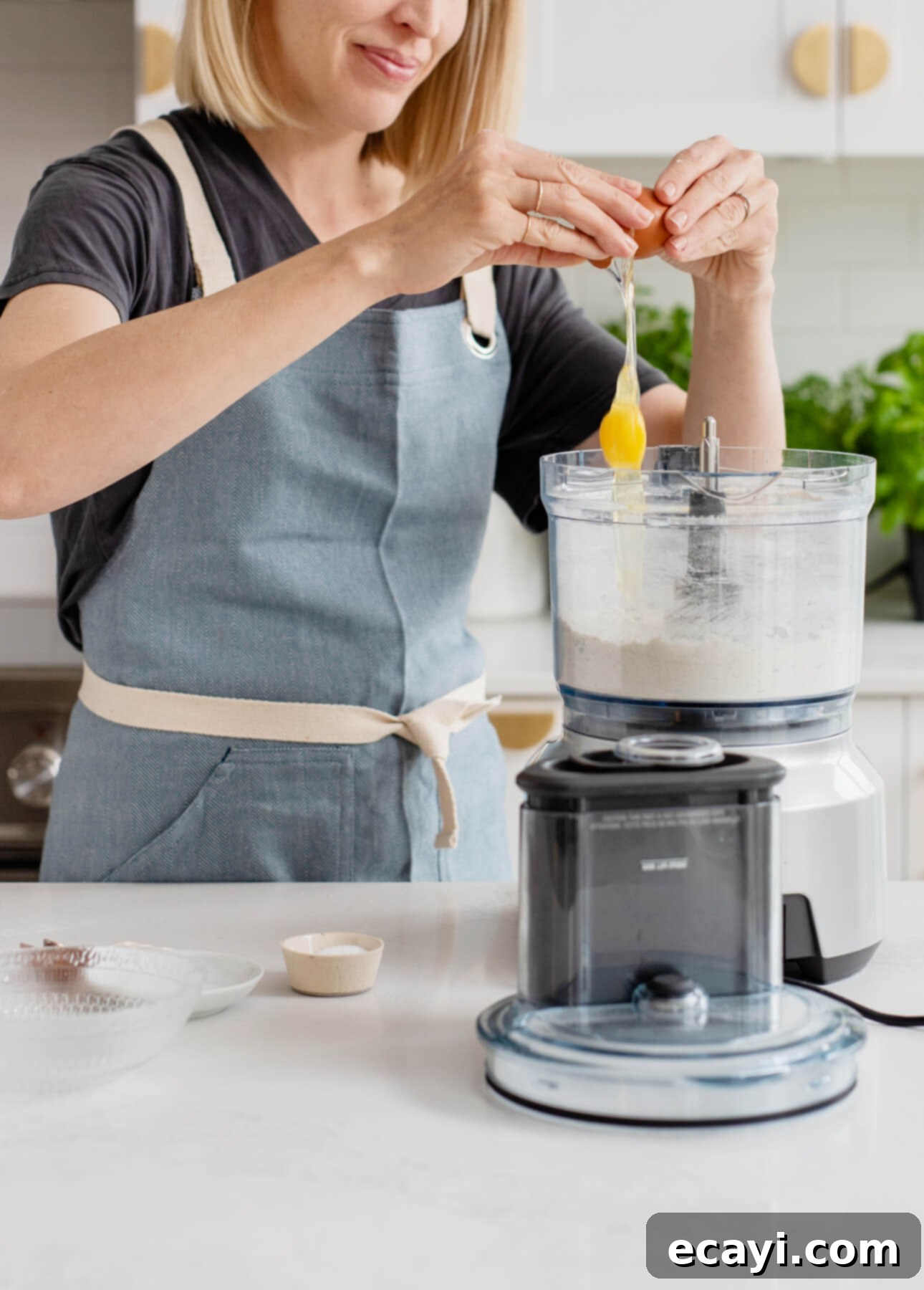
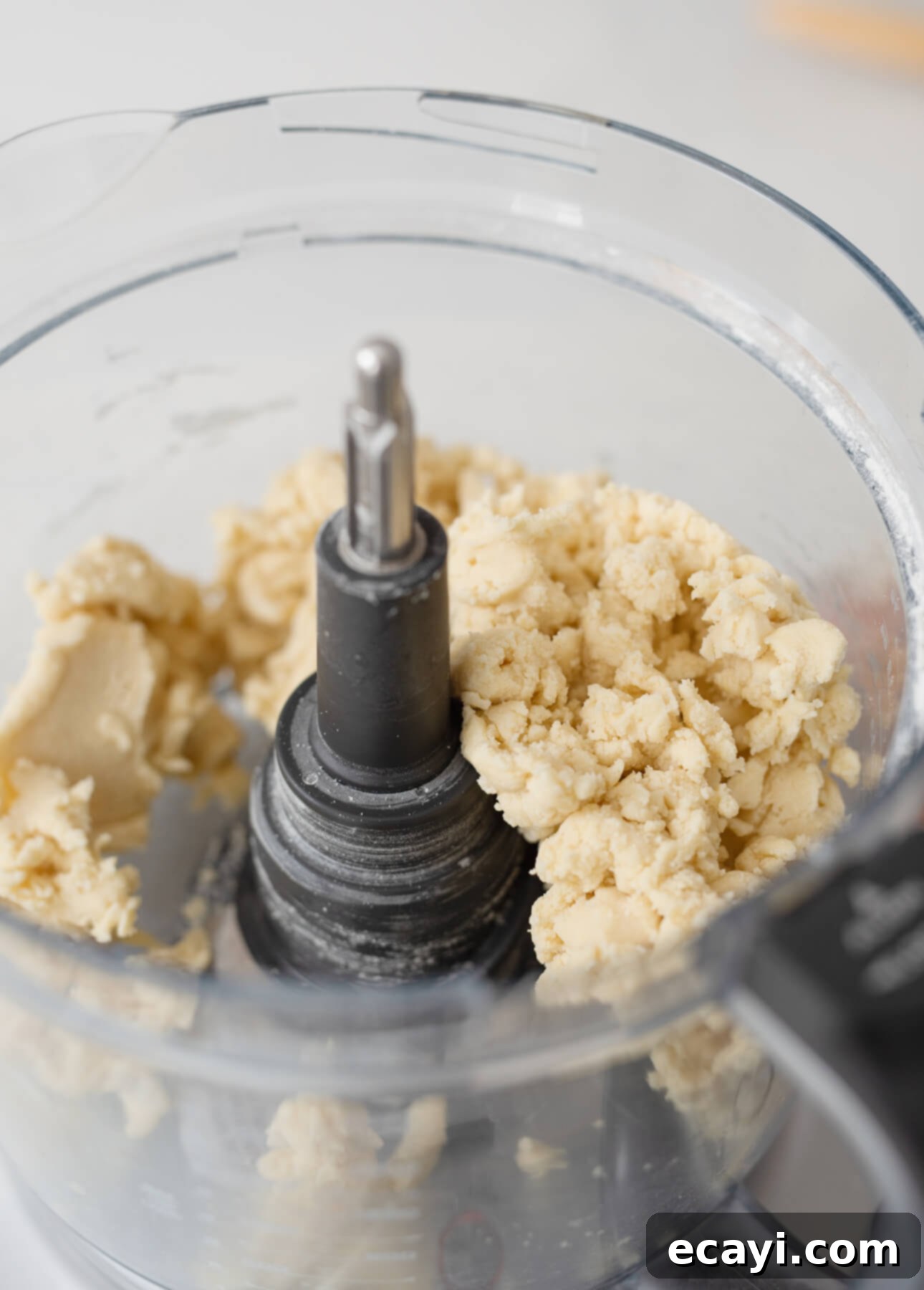
VIDEO: Watch How to Make Perfect Shortcrust Pastry in Seconds
Curious to see how easy it truly is? Watch my Shortcrust Pastry recipe video to discover the simplicity and speed of making this essential base from scratch. This visual guide will show you exactly how to achieve a perfect crust with minimal effort!
The Elegance of Classic Quiche Lorraine
With my pastry challenges firmly behind me, I can now fully appreciate the unmatched elegance and spectacular flavor of a classic Quiche Lorraine. This iconic bistro dish is more than just a meal; it’s an experience that transports me back to the charming streets of Paris with every bite. Imagine serving a generous slice of this rich, savory tart alongside a crisp, lightly dressed green salad, perhaps with an optional glass of crisp white wine – it’s a quintessentially French dining experience, and one I’m thrilled to bring to your home kitchen. My recipe captures the rustic authenticity and profound flavors that make this French dish a beloved staple.
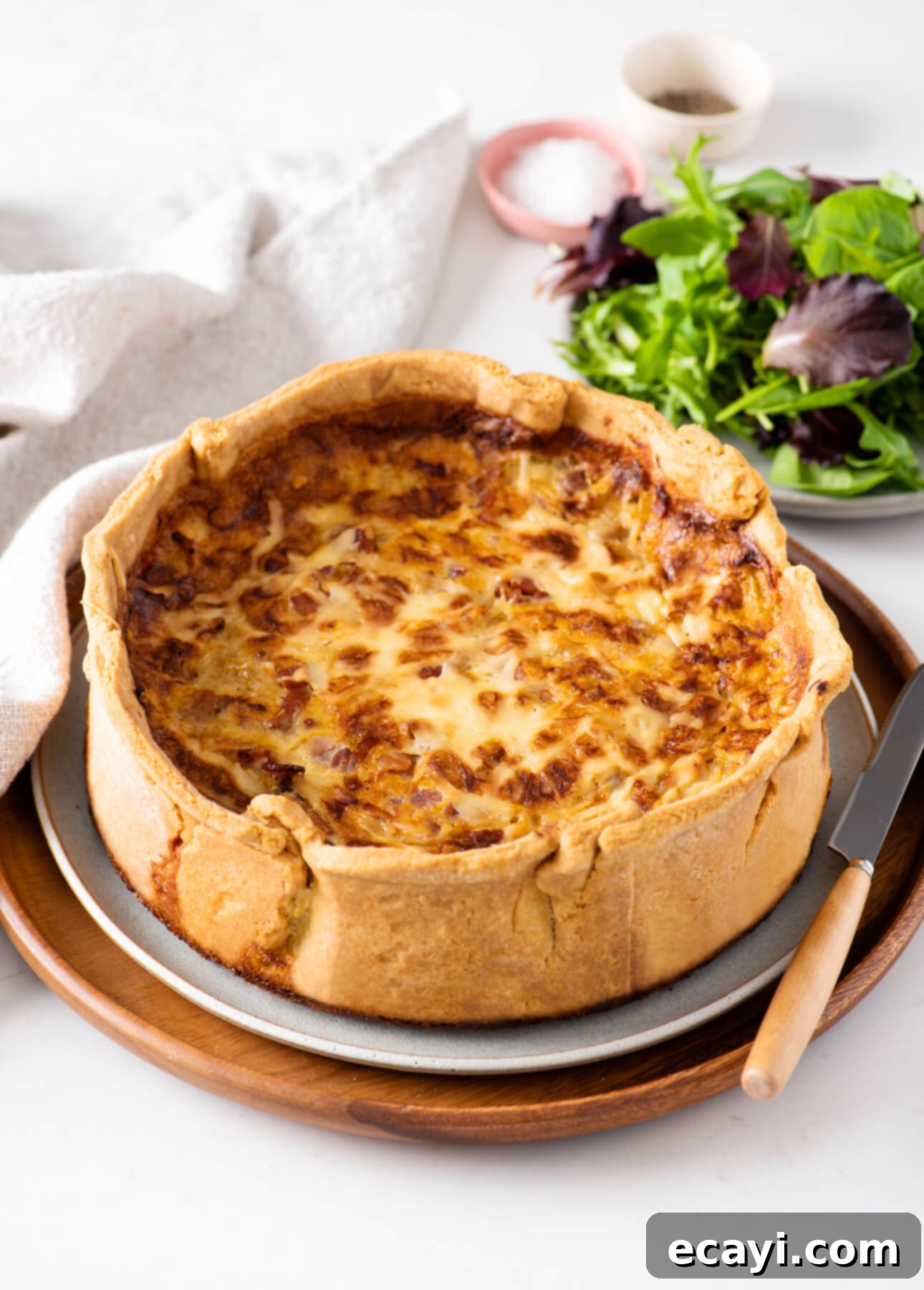
While various interpretations of Quiche Lorraine exist, the most traditional and basic version features a simple yet perfect blend of eggs, crispy bacon, rich milk, and decadent cream. However, one of the most popular and, in my opinion, most delicious adaptations includes the addition of sweet caramelized onions and nutty Comté cheese. These ingredients elevate the quiche, creating a depth of flavor and a harmonious balance that truly makes the dish shine.
Essential Tips for Crafting the Perfect Quiche Lorraine
Creating a Quiche Lorraine that boasts a flaky crust and a rich, custardy filling is an art, but it’s an accessible one with the right guidance. Here are my essential tips to ensure your homemade quiche is nothing short of spectacular:
The Key Ingredients You Need
A truly magnificent Quiche Lorraine relies on high-quality, staple ingredients. Here’s what you’ll need to gather:
- Shortcrust Pastry: The foundation of any great quiche. Opt for a homemade, all-butter pastry for the best flavor and texture.
- Large Yellow Onions: These will be slow-cooked to caramelized perfection, adding a crucial layer of sweetness and depth to the savory filling.
- Bacon: Thick-cut, good quality bacon, rendered until crisp, provides smoky, salty notes that are quintessential to Quiche Lorraine.
- Milk and Cream: A blend of whole milk and heavy cream creates the lusciously rich, custardy texture that defines a classic quiche. Don’t skimp on the fat content here; it’s key to the luxurious mouthfeel.
- Eggs: The binding agent for the custard, providing structure and richness.
- Salt, Black Pepper, and Nutmeg: Simple seasonings that enhance the natural flavors of the ingredients. Freshly grated nutmeg adds a warm, subtle spice that is traditional in quiche.
- Grated Cheese: Comté, Gruyère, or Emmenthal cheese are excellent choices. Their nutty, slightly sharp profiles complement the bacon and onions beautifully, melting into the custard to create pockets of flavor.
Can I Make Quiche Lorraine Ahead of Time? Absolutely!
Quiche Lorraine is a dish that rewards patience and planning. While it involves several steps, making it is not a last-minute endeavor. This is precisely why it’s the perfect make-ahead dish. Preparing the quiche, allowing the flavors to meld, and letting the custard fully set in the refrigerator overnight yields an incredibly rich, custardy result with a perfectly firm yet tender texture. In fact, many connoisseurs argue that Quiche Lorraine tastes even better the day after it’s baked, once all the components have had time to harmonize.
Choosing the Right Pan for Your Quiche
For a truly impressive, deep-dish Quiche Lorraine, I highly recommend using a 9-inch (23 cm) springform pan that is at least 3 inches (7.5 cm) deep. The tall sides are essential for accommodating the generous filling, and the springform design allows for easy unmolding, presenting your quiche beautifully.
If you don’t own a springform pan, don’t worry! You can easily divide the recipe, including the pastry, between two regular 9-inch (23 cm) pie plates. This will result in two slightly shallower quiches, perfect for feeding a crowd or freezing one for later. Refer to the notes in the recipe card below for specific adjustments and baking instructions for this alternative method.
Understanding Blind Baking and Its Importance
“Blind baking” is a crucial step in preparing the perfect quiche crust. It refers to baking the tart shell “naked,” or without its filling, before you pour in the wet custard mixture. This pre-baking process is especially vital when dealing with moist fillings, such as those used in a lemon tart or, of course, our Quiche Lorraine. Blind baking ensures that your crust cooks through completely, becoming wonderfully crisp and golden, rather than soggy and undercooked—a common pitfall when a wet filling is added to raw dough.
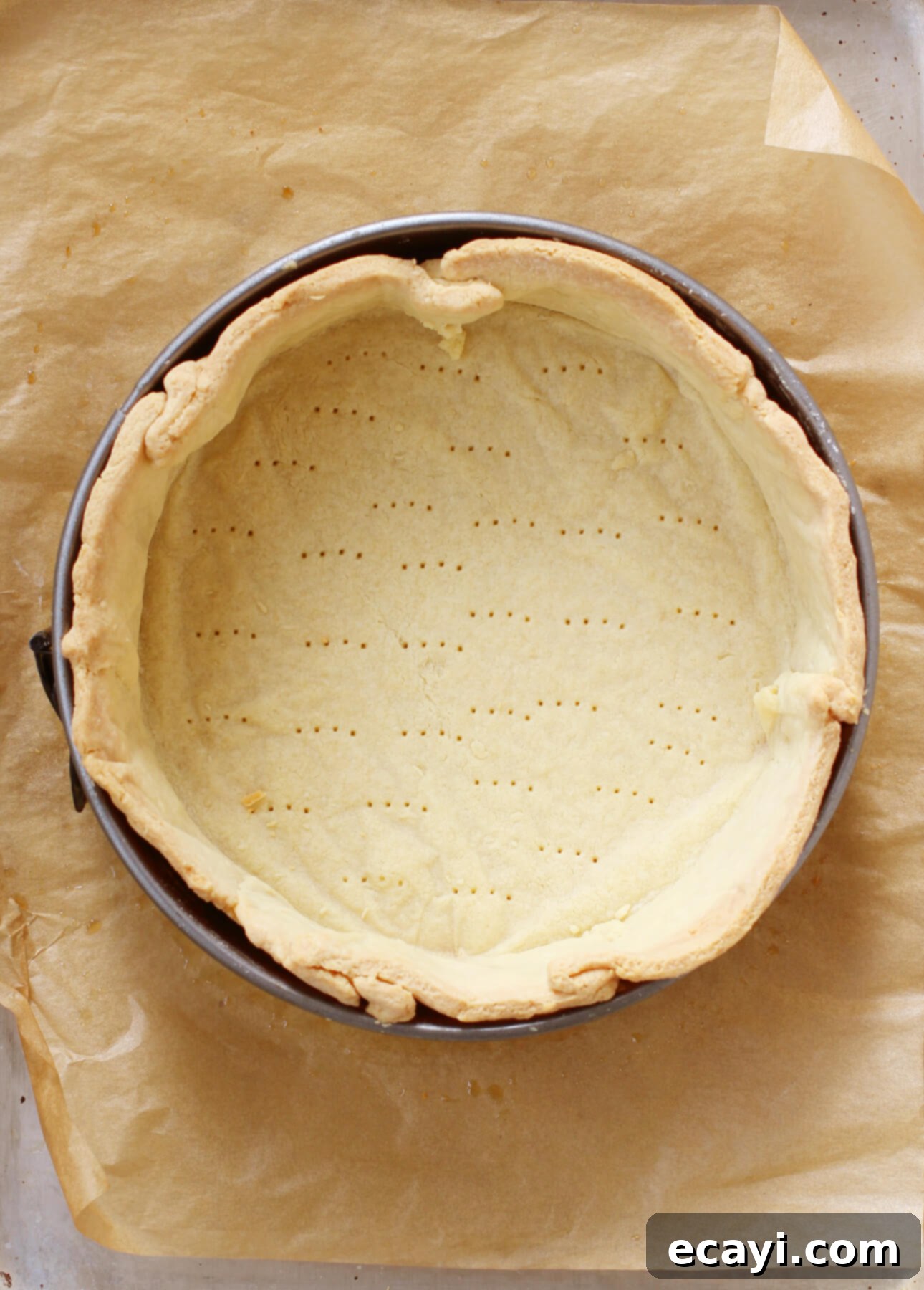
Ensuring Your Pastry Stays Put During Blind Baking
To prevent your pastry from shrinking or slumping down the sides of the pan during blind baking, you’ll need to use pie weights. Since this Quiche Lorraine recipe utilizes a deep, straight-edged pan, the best approach is to line the frozen pie crust with parchment paper and then fill the entire pan to the brim with pie weights. Without this support, the crust will likely collapse, resulting in an unfortunately misshapen and sad-looking quiche. While dedicated pie weights are excellent, they can be an investment. A budget-friendly and equally effective alternative is to use a 2-pound (900g) bag of dry whole yellow peas or chickpeas. Remember, these legumes will no longer be suitable for cooking after being used as pie weights, but you can let them cool, store them in a zip-top bag, and reuse them repeatedly for all your blind baking needs. I’ve personally been using the same bag of dry peas for years!
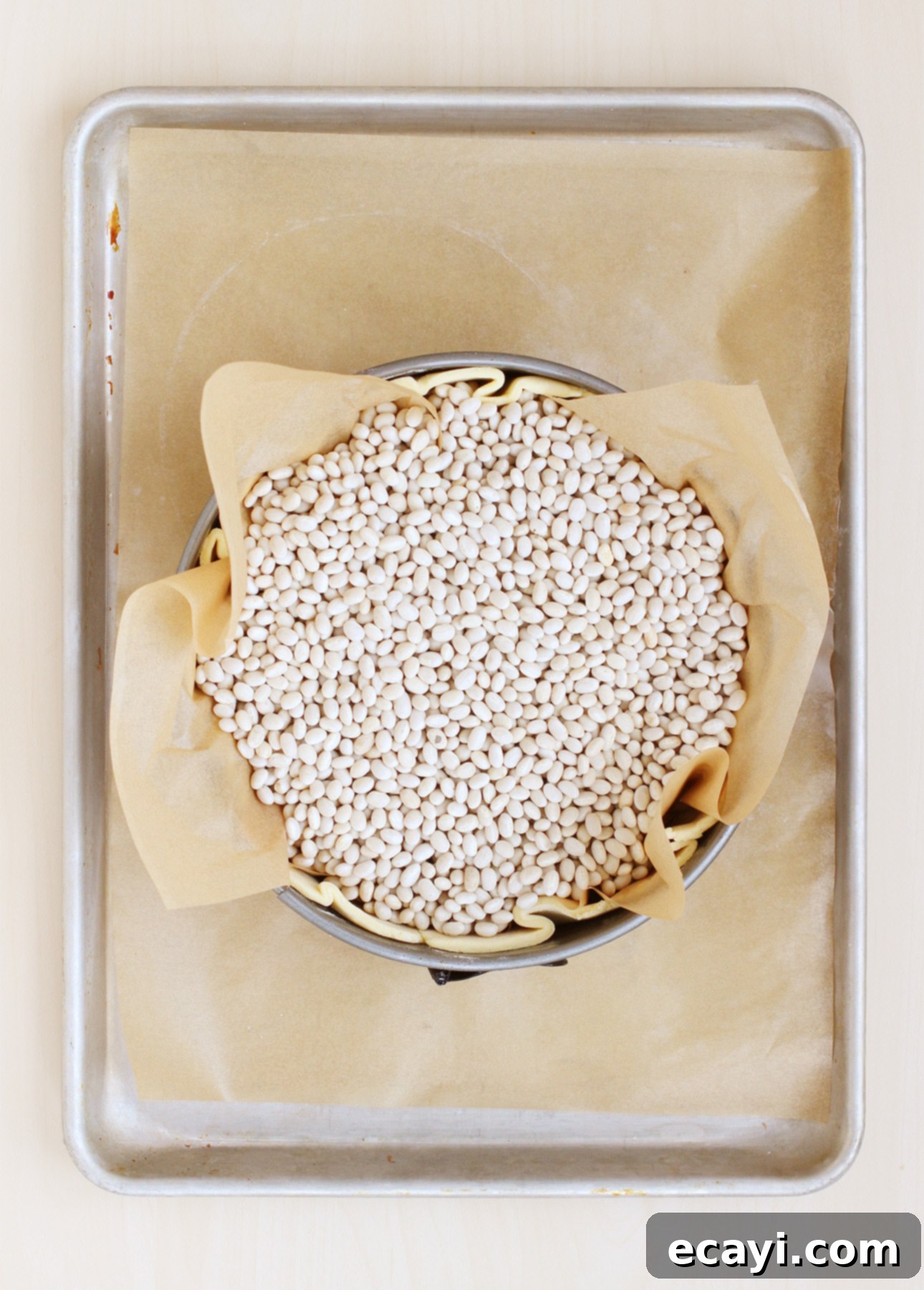
Blind Baking Without Pie Weights? Try the Overhang Method!
If you don’t have pie weights or dry peas on hand, there’s a simple trick to ensure your pastry holds its shape: the “overhang” method. Instead of trimming the excess pastry flush with the rim of the pan, allow a generous amount of dough to hang over the sides. Bake the pastry-lined pan as-is, straight from the freezer. The overhanging dough will act as a natural support, preventing the sides from slumping. Once your quiche is baked and cooled, you can easily trim away the extra crust with a sharp knife before unmolding and serving for a perfectly neat presentation.
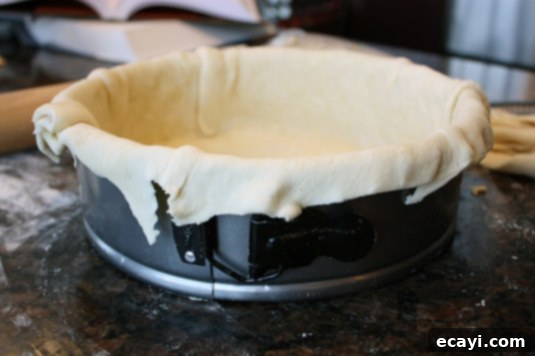
Preventing Quiche Filling Ingredients from Sinking
A perfectly baked deep-dish Quiche Lorraine should have its delicious ingredients evenly distributed throughout the custardy filling, not all sunken to the bottom. The secret to achieving this lies in making your cream mixture extra-frothy! Before combining the filling ingredients, vigorously beat the milk, cream, eggs, and seasonings using a hand mixer or a stand blender until it’s noticeably aerated and frothy. As you layer the caramelized onions, crispy bacon, and grated cheese with this airy custard, the tiny air bubbles created by the beating will gently suspend the solid ingredients, keeping them beautifully distributed throughout the quiche as it bakes. This technique ensures every slice is a perfect medley of flavors and textures.
Use a hand mixer or a blender to make the quiche mixture extra-frothy:
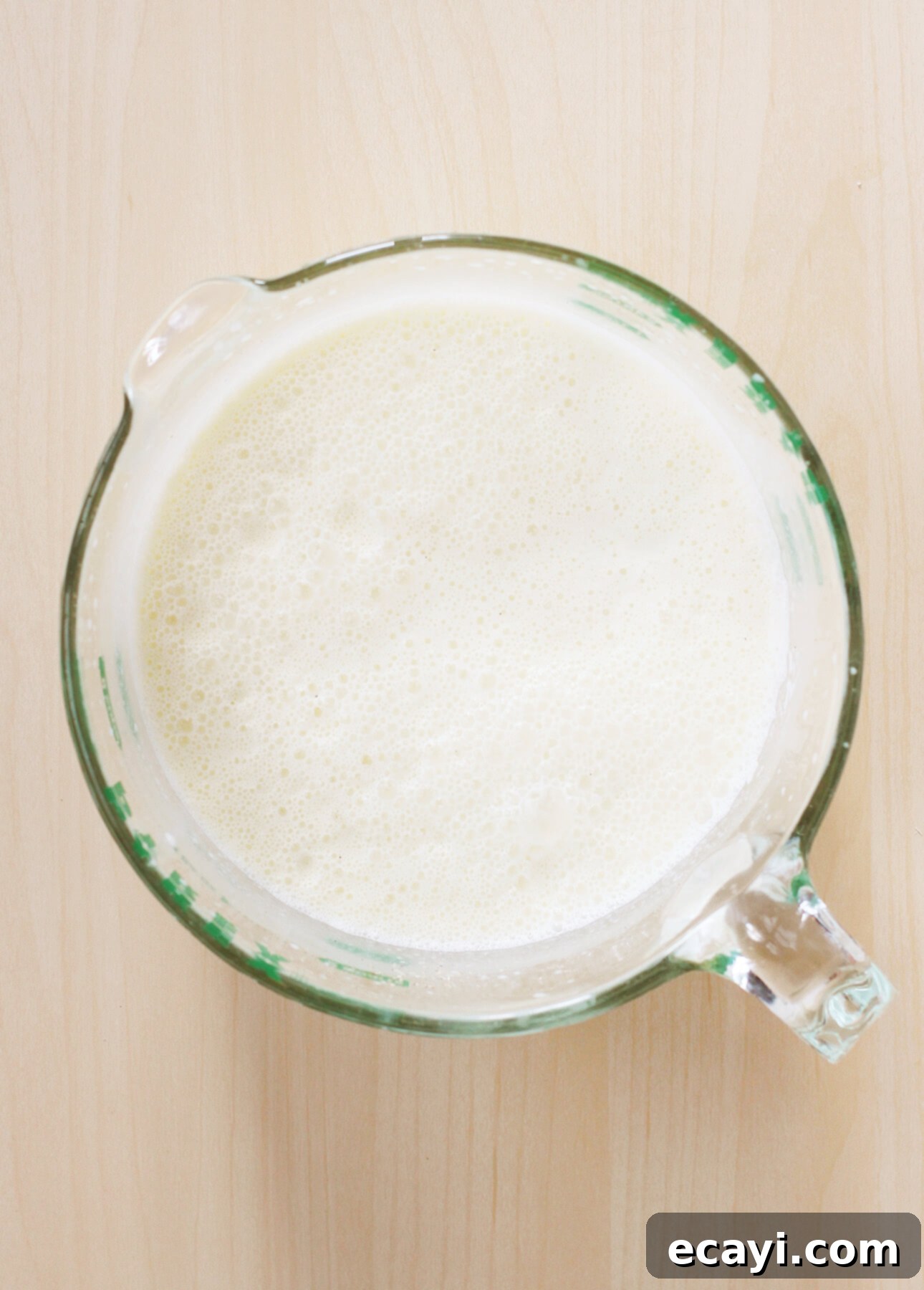
Layer the filling ingredients with the quiche mixture to distribute them evenly:
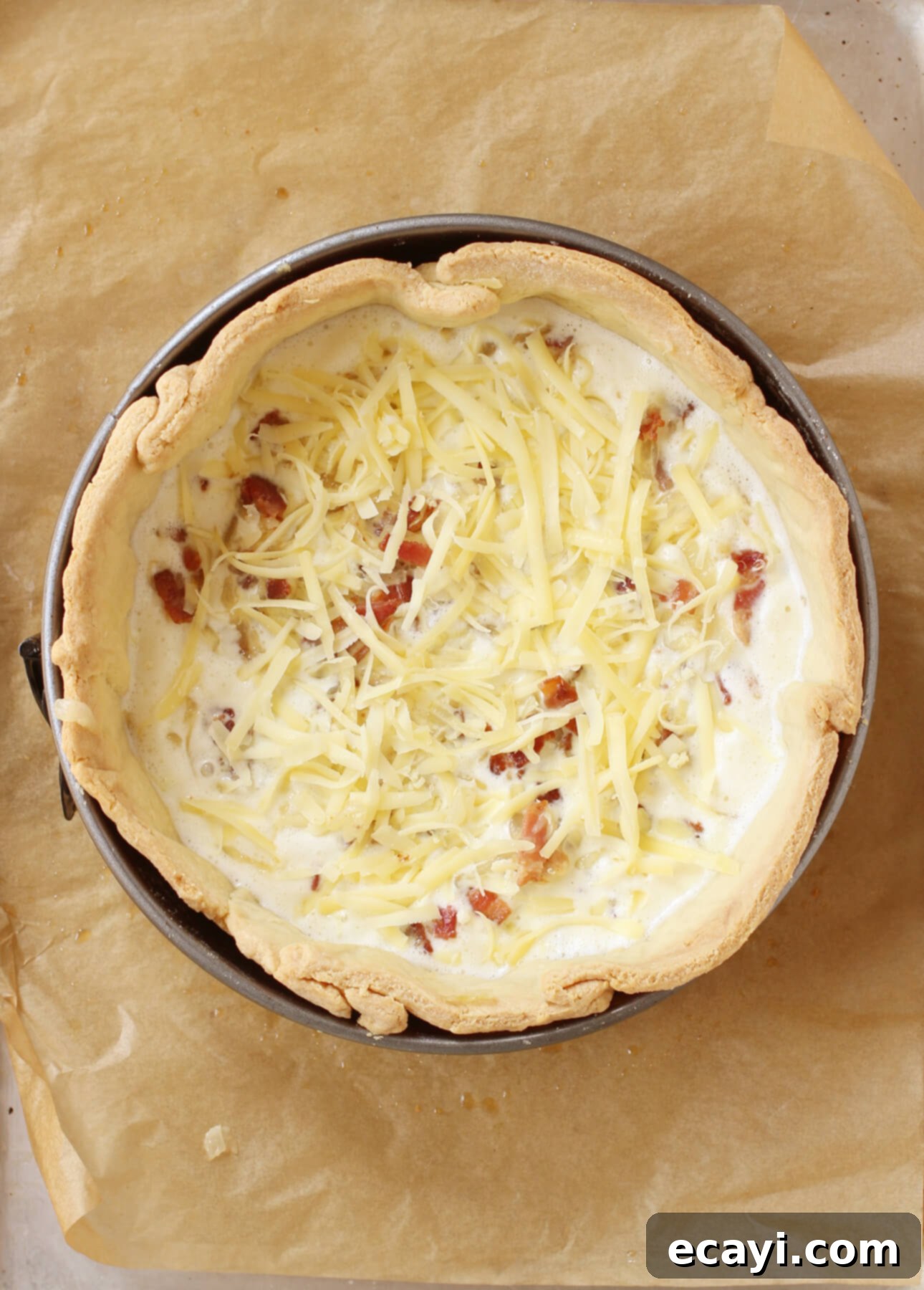
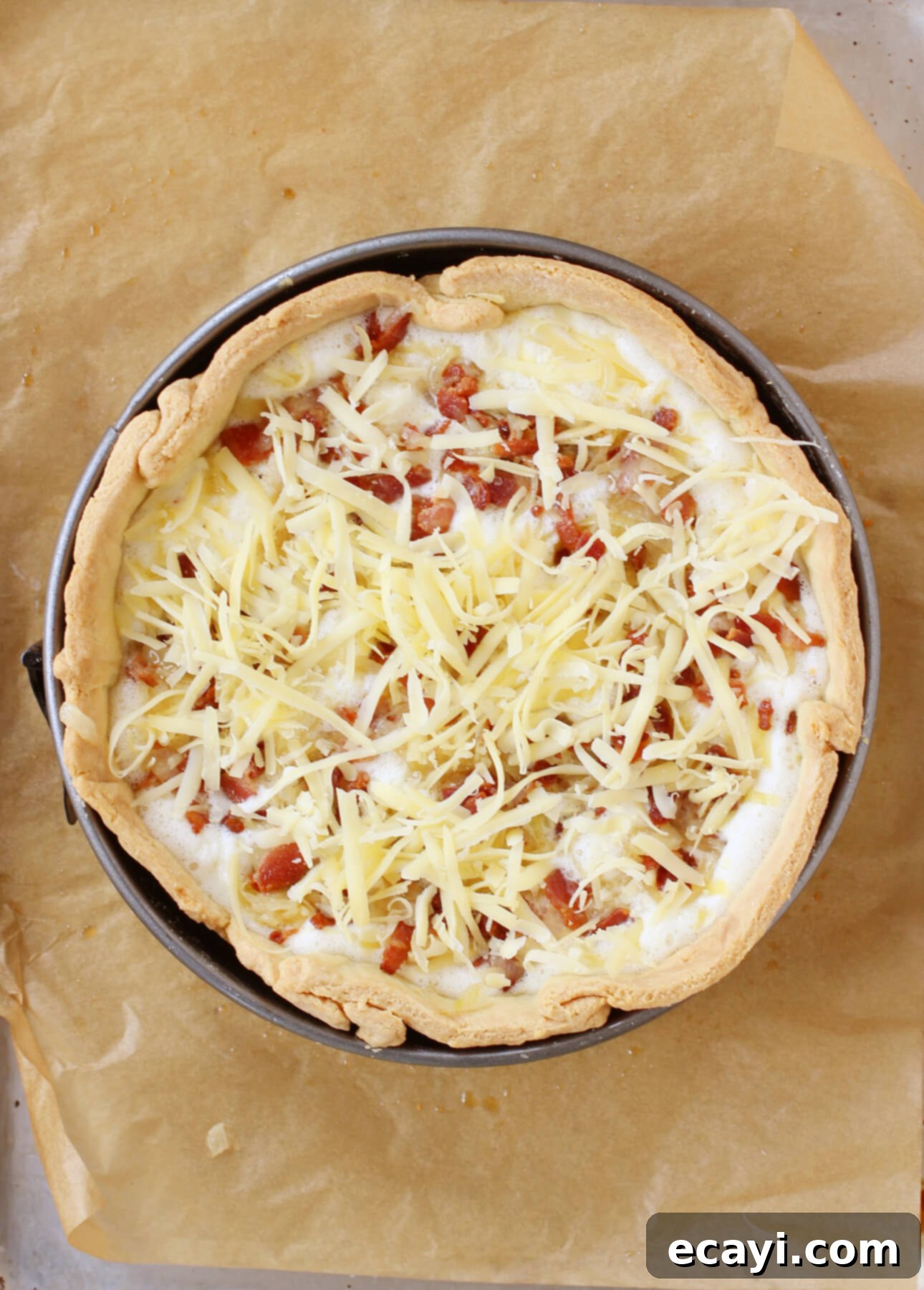
The extra-frothy quiche lorraine mixture will hold the filling ingredients throughout the baking process, preventing them from sinking to the bottom of the tart:
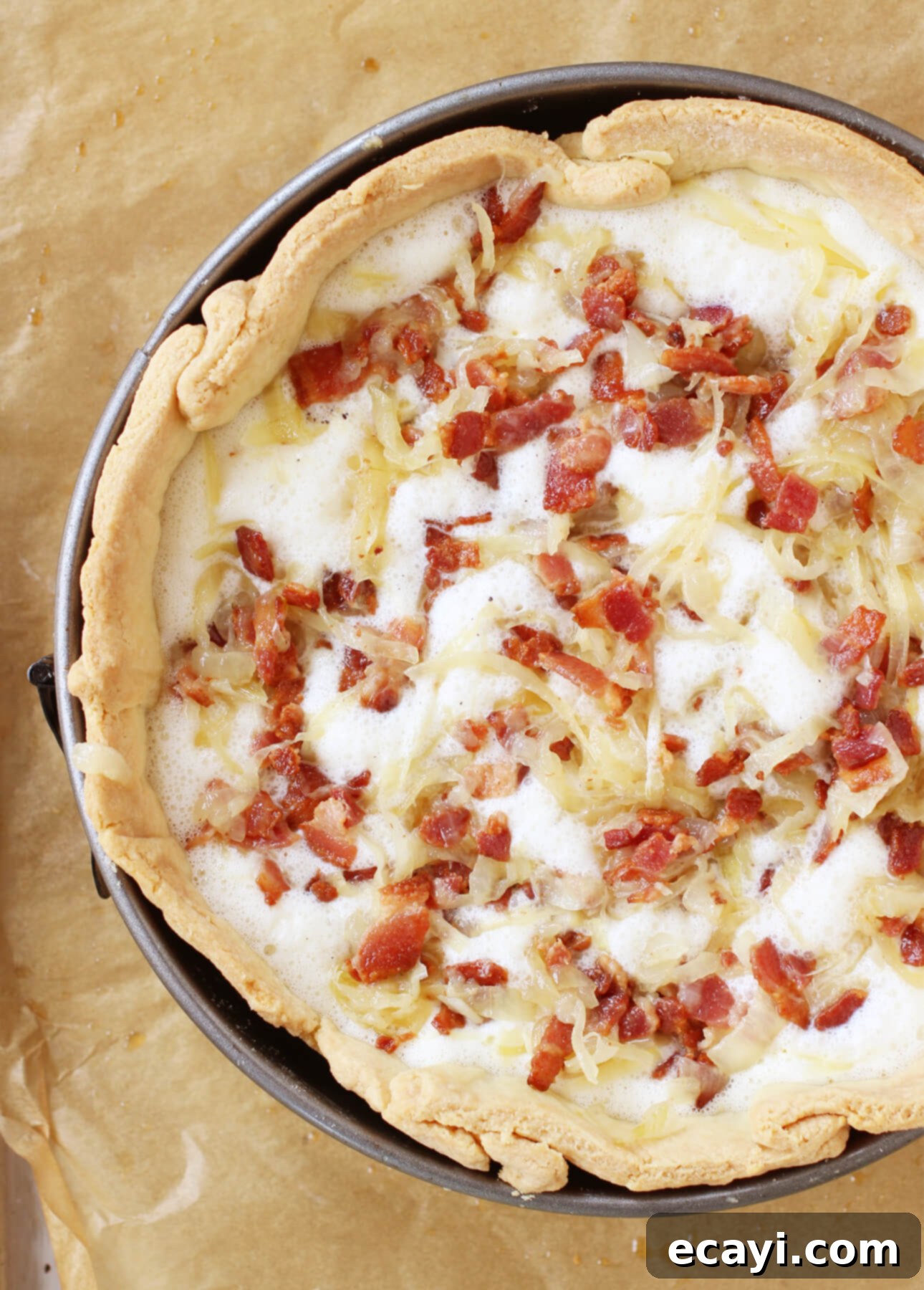
Classic Quiche Lorraine truly is an extraordinary dish. Its versatility is one of its greatest assets; it can be prepared a day or more in advance, and it’s equally delightful served hot, warm, or even cold. This makes it an ideal choice for any occasion, from a leisurely brunch to an elegant dinner party, a casual lunch, or even a satisfying late-night snack. Its timeless appeal and comforting flavors ensure it will always be a welcome addition to your table.
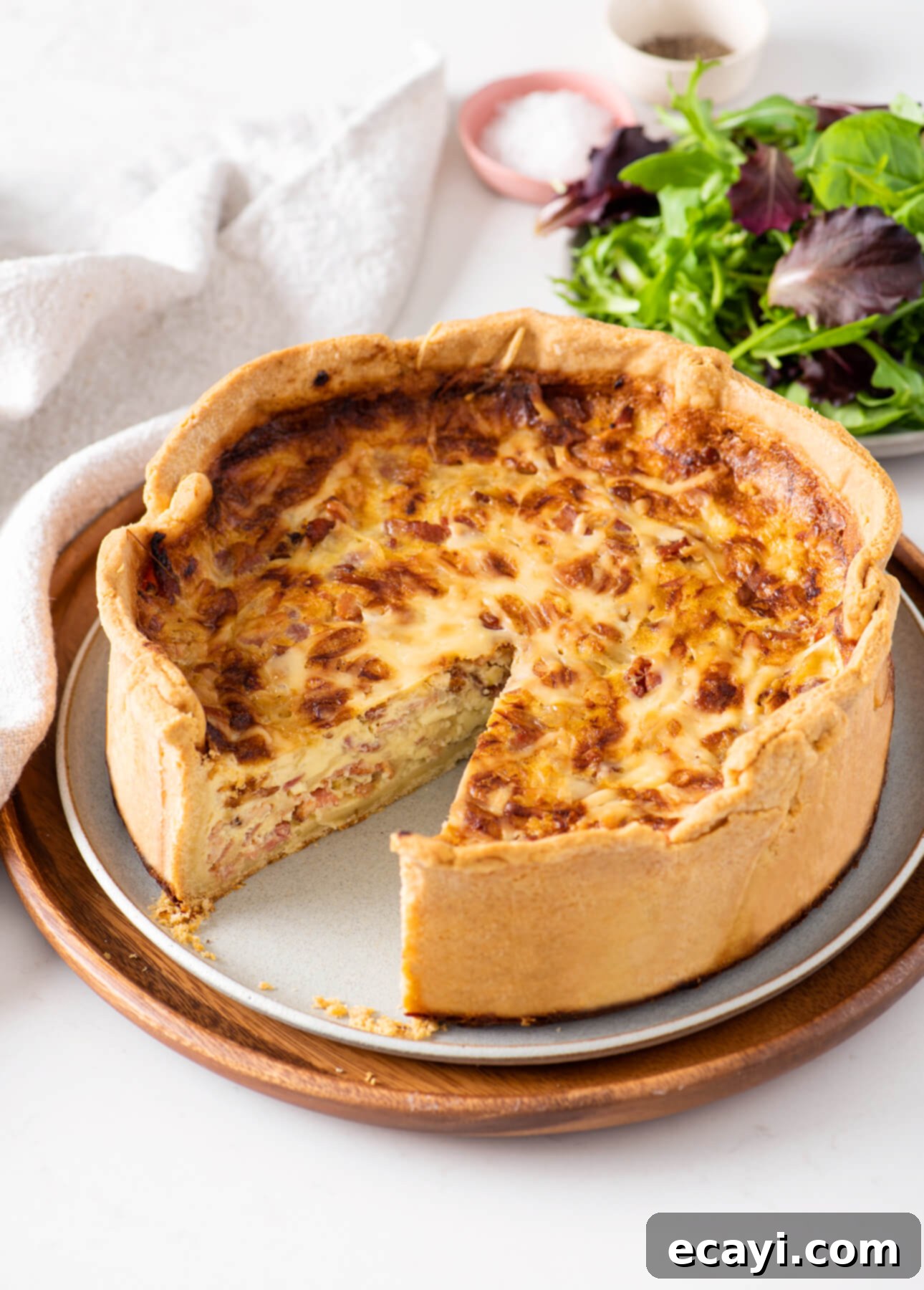
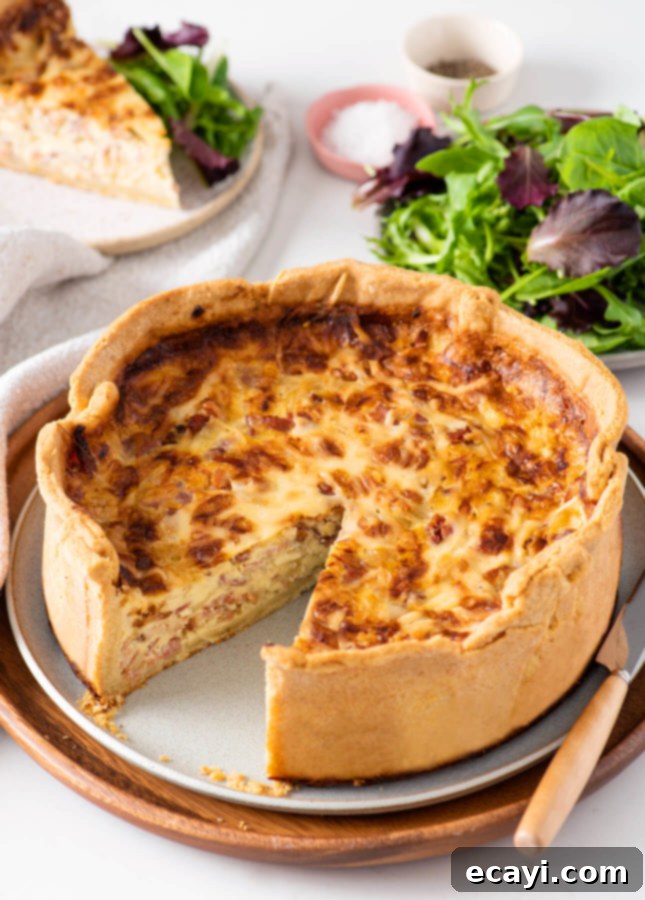
Pin Recipe
Classic Quiche Lorraine Recipe
Ingredients
For the crust
- 2 batches Foolproof Shortcrust Pastry (see method below for rolling and blind baking instructions)
For the quiche
- 1 ½ lbs large yellow onions, (about 2) also called Spanish onions, trimmed, peeled, and thinly sliced
- 2 tbsp extra-virgin olive oil
- 2 tsp kosher salt, or fine sea salt, divided
- 1 lb thick-cut bacon, cut into 1/4-in (0.5 cm) cubes, or thin strips
- 2 cups whole milk (3.25% m.f.), or partly skimmed milk (2% m.f.)
- 1 cup heavy cream (35% m.f.)
- 6 large eggs
- ½ tsp freshly ground black pepper
- ¼ tsp freshly grated nutmeg
- ½ cup grated Comté, Gruyère, or Emmenthal cheese
Instructions
-
Lightly grease a 9-in (23 cm) springform pan with 3-in (7.5 cm) sides. Set aside.
FOR THE SHORTCRUST PASTRY
-
Make the two batches of Foolproof Shortcrust Pastry, one after the other. When the first one is done, dump it on a floured working surface, and make the second batch right away. Dump it over the first batch, then, using your hands, gather the whole thing into a loose, flattened ball. Sprinkle the dough with flour, then roll out to a 16-in (40 cm) circle. (Sprinkle with more flour as needed to prevent sticking.) The pastry should be about 1/4 inch (6 mm) thick.
-
Carefully fold the dough in half, then place over the bottom half of the prepared springform pan. Unfold, then gently ease the dough into the pan, pressing it onto the bottom and creasing the dough to flatten it against the sides of the pan. Using a fork, prick the bottom pastry all over.
-
If blind baking with pie weights or dry peas, cut off the overhanging pastry so the pastry is flush is with the top of the pan.
If blind baking without pie weights or dry peas, let the pastry hang over the sides of the pan. Freeze the pastry-lined pan for at least 30 minutes, or until ready to blind bake.
TO BLIND BAKE THE CRUST
-
Preheat the oven to 350°F (175°C).
-
If blind baking with pie weights or dry peas, cut out a large piece of parchment paper and ease it into the pastry to line it. Fill the pan with pie weights or dry peas. Bake for 30 minutes. Remove from the oven. Carefully lift the parchment with the weights or peas out of the pan (transfer these into a large bowl to let cool completely before storing), then return the pan to the oven and bake for an additional 15 minutes, or until the crust looks dry and is light golden brown. Set aside on a cooling rack.
-
If blind baking without pie weights or dry peas, place the pan with the overhanging pastry straight from the freezer to the oven. Bake for 45 minutes, or until the crust looks dry and is light golden brown. Set aside on a cooling rack.
FOR THE CARAMELIZED ONIONS
-
In a large saute pan or Dutch oven set over medium heat, warm up the extra-virgin olive oil until shimmering. Add the sliced onions, sprinkle with 1 tsp (5 ml) of the salt, then stir to combine. Cover and cook for 15 minutes. Uncover, stir, reduce the heat to low, and continue cooking, uncovered, until the onions are tender and lightly browned, about 1 hour. Stir every 15 minutes to ensure the onions cook evenly. Transfer the cooked onions to a large bowl and let cool completely.
-
In a skillet set over medium-high heat, cook the bacon until crisp but not dry. Using a slotted spoon, transfer the bacon to the bowl with the cooked onions and let cool.
TO BAKE THE QUICHE LORRAINE
-
Preheat the oven to 325°F (160°C).
-
Make the custard: In a large bowl or an 8-cup measuring cup, combine the milk, cream, eggs, remaining salt, pepper, and nutmeg and, using a hand mixer, blend until very frothy (you can add the ingredients to a stand blender instead.)

-
Place the springform pan with the blind baked over a baking sheet to catch any leaks. Mix the cooked onions and bacon to combine, then spread half of the mixture over the bottom of the crust. Pour half of the custard over the onions. Sprinkle with half the grated cheese. Spread the remaining onion and bacon over. Blend the remaining custard again to refroth, then pour into the crust. Sprinkle with the remaining cheese.

-
Bake for about 90 minutes, or until the top of the quiche is golden brown and the center is just set. The center of the Quiche Lorraine should still jiggle a bit: it will set fully as the quiche cools.
-
Transfer the Quiche Lorraine to a wire rack and let cool to room temperature, at least 2 hours.
Refrigerate until the quiche is fully chilled, at least 3 hours, or ideally overnight. Refrigerating the quiche will allow it to fully set and slice more cleanly. You can keep the quiche refrigerated for up to 3 days.
-
If you blind baked the crust without pie weights or dry peas, using a sharp knife to cut off the extra crust along the rim.
-
To unmold the Quiche Lorraine, slide a sharp knife along the edge of the ring mold or cake pan to loosen the quiche, then loosen the springform and remove the quiche from the pan.
SERVING
-
Slice the Quiche Lorraine into portions, then serve cold or room temperature. You can also reheat portions in a 350°F (175°C) oven for 10 minutes. Serve the quiche with a lightly dressed green salad.
STORAGE
-
Refrigerate leftover Quiche Lorraine in an airtight container for up to 3 days.
Notes
Make the two batches of Foolproof Shortcrust Pastry, but keep each batch separate. Roll out one batch at a time, then lay each rolled-out crust in a 9-inch pie plate. Cut off the excess pastry, prick the bottoms all over with a fork, then freeze for at least 20 minutes.
Blind bake the crusts (with or without pie weight or dry peas) at 350°F (175°C) for 30 minutes (remove the pie weight or dry peas after 20 minutes if you’re using them.)
Prepare the onions, bacon, and custard as indicated. Divide the ingredients between the two blind baked crusts, when sprinkle with the cheese.
Bake for 40-45 minutes, or until the tops of the quiches are golden brown and the centers are just set. The centers of the quiches should still jiggle a bit: they will set fully as they cool. Let cool to room temperature, then refrigerate overnight. Serve as indicated.
Did you make this?
Tell me how you liked it! Leave a comment or take a picture and tag it with @foodnouveau on Instagram.
This site is a participant in the Amazon Associates Program, an affiliate advertising program designed to provide a means for the site to earn fees by linking to Amazon and affiliated sites.
If you click on an affiliate link, I may earn advertising or referral fees if you make a purchase through such links, at no extra cost to you. This helps me creating new content for the blog–so thank you! Learn more about advertising on this site by reading my Disclosure Policy.
